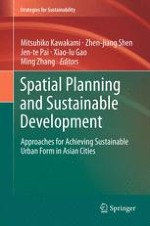2013 | OriginalPaper | Buchkapitel
13. Urban Form, Transportation Energy Consumption, and Environment Impact Integrated Simulation: A Multi-agent Model
verfasst von : Ying Long, Qi-zhi Mao, Zhen-jiang Shen
Erschienen in: Spatial Planning and Sustainable Development
Verlag: Springer Netherlands
Aktivieren Sie unsere intelligente Suche, um passende Fachinhalte oder Patente zu finden.
Wählen Sie Textabschnitte aus um mit Künstlicher Intelligenz passenden Patente zu finden. powered by
Markieren Sie Textabschnitte, um KI-gestützt weitere passende Inhalte zu finden. powered by
